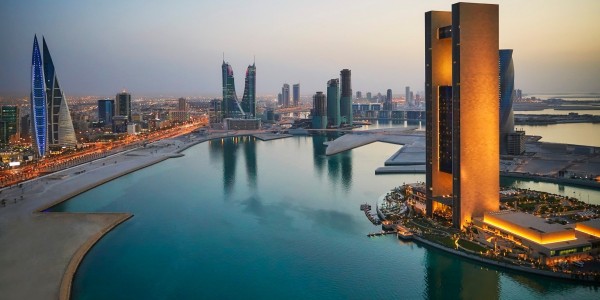Bahrain’s Financial Situation Dire, Still Needs Its Neighbors Support: Bloomberg

2021-07-08 - 11:31 p
Bahrain Mirror: Bahrain will need more Gulf support in the medium term, financial analysts say, noting that Bahrain has received more than half of the planned support in the financial balance program which the government signed in partnership with three Gulf states.
Bahrain has signed a financial agreement requiring structural reforms in exchange for $10 billion from Saudi Arabia, the UAE and Kuwait.
While most Persian Gulf countries replenish spent coffers with profits from rising oil prices, the region’s smallest economy is still in bailout territory.
Bahrain needs crude prices above $88 a barrel to balance its budget this year.
It’s preparing to tap international debt markets in the coming months to finance a deficit that’s widened in the aftermath of the pandemic and left it lagging neighbors in the world’s top energy-exporting region.
“Ambitious reform is needed to address Bahrain’s large fiscal imbalances and there doesn’t seem to be the political will behind this currently,” said Scott Livermore, chief Middle East economist for Oxford Economics in Dubai. “The general consensus seems to be that Bahrain will need further Gulf backing in the medium term.”
Bahrain’s situation looks particularly dire when compared to Oman, the Gulf’s other weak link.
Bahrain’s Finance Ministry didn’t respond to a request for comment, but the minister, Sheikh Salman bin Khalifa al Khalifa, told Bloomberg last year that his priority, for now, was to restore economic growth rather than further boost revenue.
“We really want to see the recovery take hold before we take any additional steps in that regard,” he said
The IMF expects Bahrain’s reserves to average $2.5 billion into 2022, covering only 1.2 months of imports. Its budget deficit is projected at around 9% of economic output this year, more than double Oman’s 2.4% shortfall, according to the IMF.
Both Moody’s Investors Service and S&P Global Ratings recently lowered Bahrain’s outlook to negative citing weaker fiscal metrics and increased risks to the government’s ability to service external debt and maintain confidence in its currency peg against the dollar.
Derivatives traders increased bets for a devaluation after S&P’s report in late May. Twelve-month forward contracts on the dinar reached about 213 points in early June, the highest since January 2019, and remain at those levels.
“Bahrain has the worst fundamentals in the Gulf. It’s the only country where a $75 oil price doesn’t cover its current account needs. It also has the largest foreign and public debt, the lowest reserves, as well as one of the widest budget deficits,” the agency adds.
Still, the cost of insuring Bahrain’s debt against non-payment remains low. Five-year credit-default swaps are lower than they were in 2018, after neighbors pledged help.
The contracts closed at around 224 basis points Tuesday, reflecting a long-held view among investors that rich neighbors wouldn’t allow a Bahraini collapse to expose them to potentially higher borrowing costs, currency pressures and even political upheaval.
For Saudi Arabia, economists say, the relatively small cost of supporting Bahrain, a flashpoint in the 2011 Arab Spring uprisings, is worth it. The country’s still benefiting from previous aid rounds.
About $5.6 billion of the GCC Development Fund program has been utilized to date, with around $500 million of projects awarded in the first three months of 2021.
Bahrain’s credit risk is still at relatively low levels.
“The main gist with Bahrain is that without support, no one would invest in Bahraini dollar sovereign debt at these levels,” said Richard Briggs, a London-based money manager at GAM Holdings. “It all relies on support.”
- 2023-11-25S&P Revises Bahrain's Outlook to "Stable" on Fiscal Deficit Worries
- 2023-07-13Haj Sumoud Transferred from Dry Dock Prison to Al-Salmaniya Emergency Department after His Health Deteriorated
- 2023-06-22Bahraini Mumtalakat Buys Saudi McLaren's Stake
- 2023-05-18After Allocating $5 Billion Investment Fund, Is Bahrain Waiting New Saudi Support?
- 2022-09-21Abu Sa'afa Field Revenues Reach One Billion, 33 Million BD, Its Revenues Expected to Increase by 40% this Year